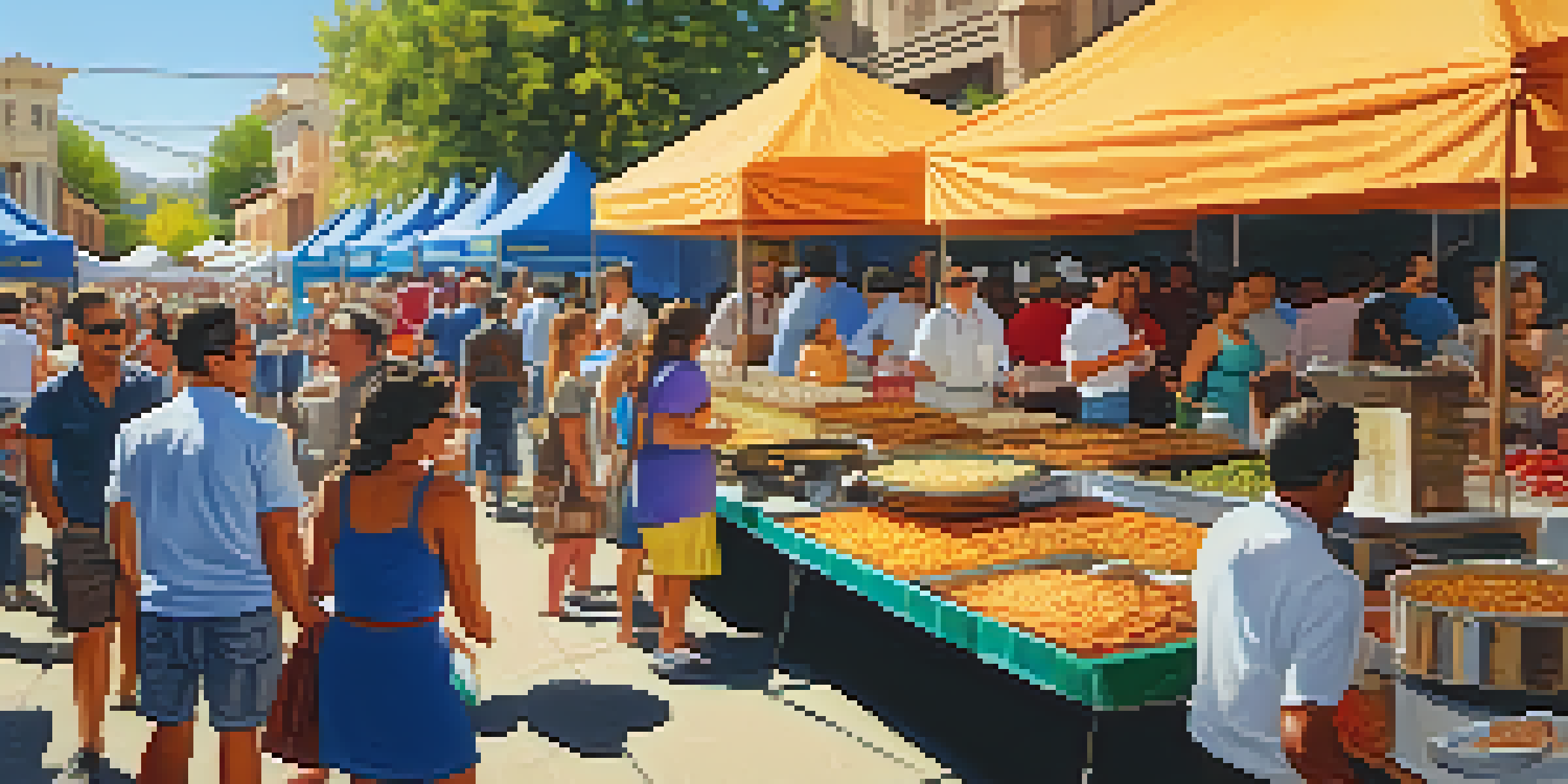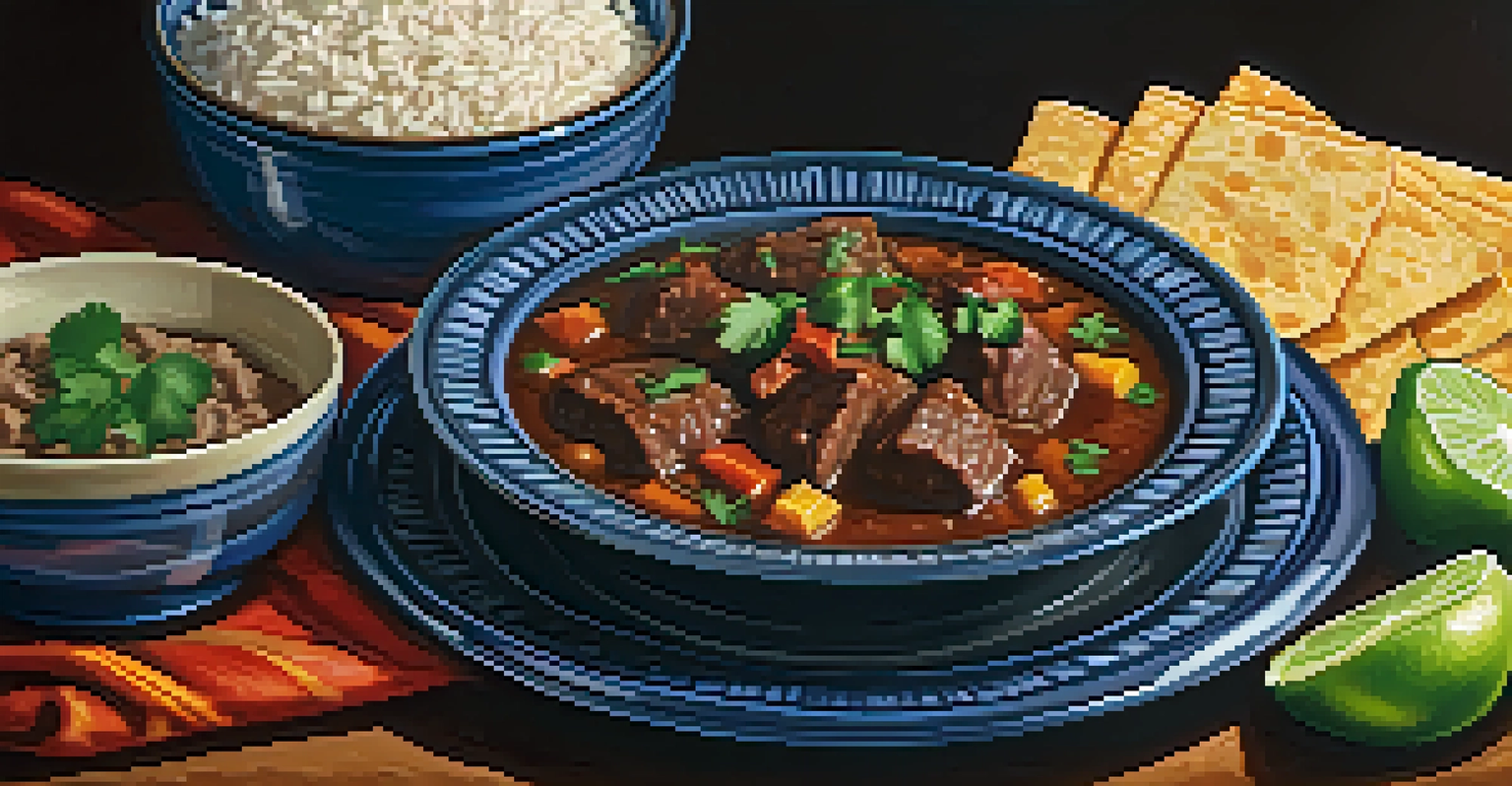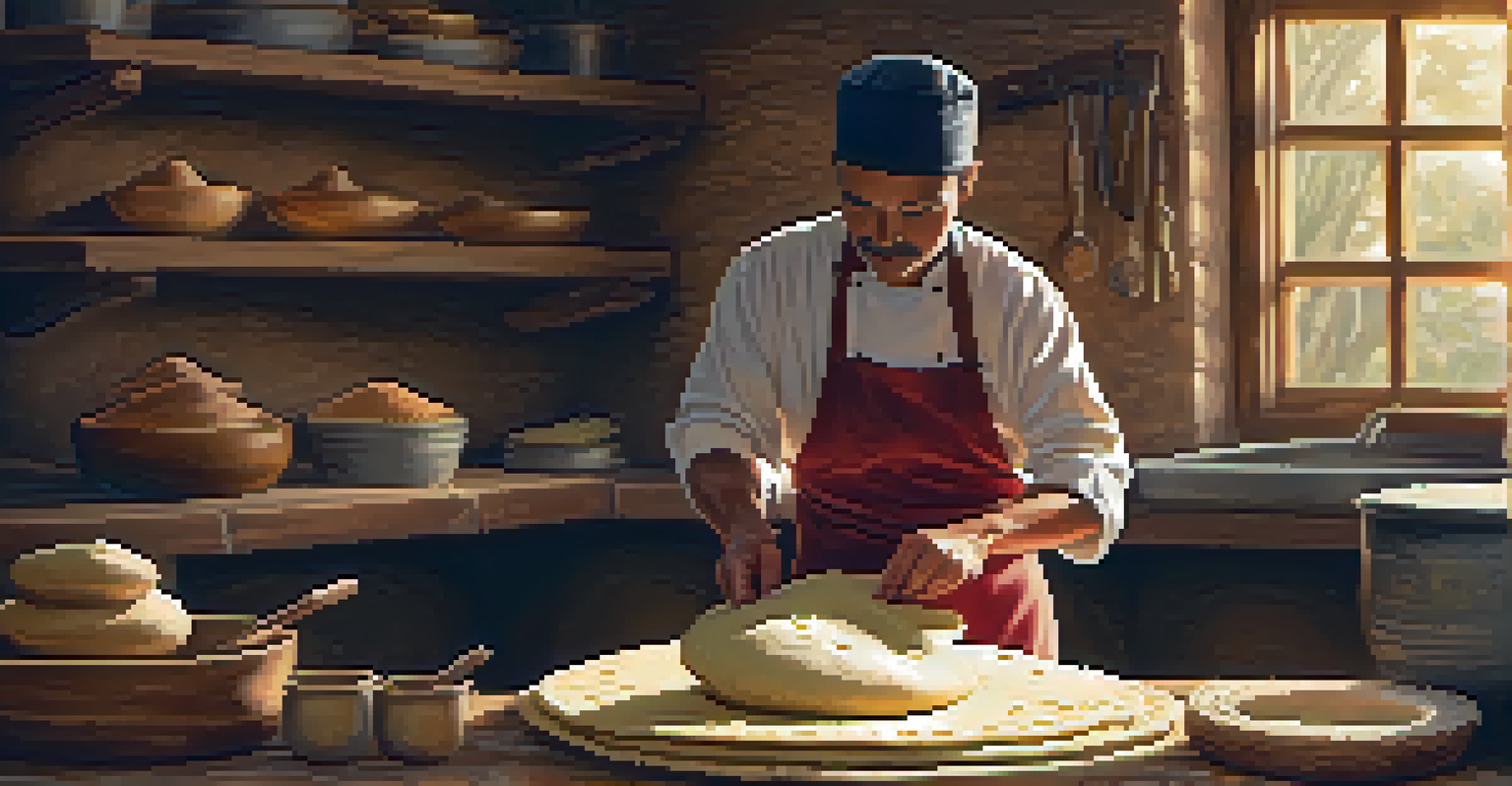Culinary Heritage: Spanish Influences on San Antonio Cuisine

The Historical Roots of Spanish Cuisine in San Antonio
San Antonio's culinary landscape is deeply rooted in its Spanish heritage, dating back to the early 18th century. Spanish colonizers brought with them a variety of ingredients and cooking techniques that have since melded with local traditions. This blend has created a unique flavor profile that defines the city's cuisine today, showcasing the influence of both Spanish and Indigenous cultures.
Food is our common ground, a universal experience.
The establishment of missions in the area played a vital role in the introduction of new agricultural practices. Crops like corn, beans, and peppers became staples, while techniques such as open-fire cooking were adopted. These practices laid the groundwork for many dishes that locals cherish, from tamales to enchiladas.
As the city grew, so did the fusion of culinary practices, with Spanish recipes evolving to include local ingredients. This ongoing transformation reflects the dynamic nature of San Antonio's food scene, making it a fascinating case study of cultural exchange and adaptation.
Key Ingredients in Spanish-San Antonio Cuisine
When it comes to San Antonio cuisine, certain ingredients are hard to miss, thanks to their Spanish roots. Common elements like cumin, garlic, and olive oil are staples that add depth to many local dishes. Additionally, the use of tomatoes and peppers creates a vibrant palette of flavors that can be found in everything from salsas to stews.

Another standout ingredient is chorizo, a spicy sausage that originated in Spain and has become a beloved addition to Tex-Mex dishes. Its smoky flavor infuses everything from tacos to breakfast burritos, showcasing how Spanish flavors have been adapted to fit the local palate. The fusion continues with the use of tortillas, which are fundamental to both cuisines.
Spanish Heritage Shapes San Antonio Food
San Antonio's cuisine is a rich tapestry woven from Spanish and Indigenous influences, creating a unique flavor profile that defines the city.
The culinary creativity doesn’t stop there; San Antonio chefs often experiment with traditional Spanish ingredients in innovative ways. For example, dishes like paella may be reinterpreted with local seafood, showcasing how San Antonio's cuisine pays homage to its Spanish roots while embracing new influences.
The Role of Festivals in Celebrating Culinary Heritage
Festivals play a significant role in celebrating San Antonio's rich culinary heritage, with events like Fiesta and the annual Tamale Festival bringing the community together. These gatherings not only highlight traditional Spanish dishes but also promote the fusion of flavors that characterize the city's cuisine. Attendees can sample everything from paella to street tacos, celebrating the blend of cultures.
Cooking is like love. It should be entered into with abandon or not at all.
Food booths, cooking demonstrations, and contests often take center stage at these festivals, providing an opportunity for local chefs to showcase their culinary skills. It's a chance for them to reinterpret classic Spanish dishes while incorporating local ingredients, fostering a sense of pride in the community's heritage.
Moreover, these events serve as a platform for education, where attendees can learn about the history of the food they're enjoying. This connection between food and culture underscores the importance of preserving these culinary traditions for future generations.
Influence of Spanish Techniques on Local Cooking
Spanish cooking techniques have left a lasting imprint on San Antonio's culinary practices. Techniques such as slow-cooking, braising, and grilling are not only prevalent but are celebrated in local kitchens and restaurants. These methods allow for the development of rich flavors, particularly in dishes like barbacoa and mole, which are staples in the region.
The art of making homemade tortillas, a tradition rooted in both Spanish and Indigenous practices, is another example of this influence. Many families still uphold the tradition of hand-making tortillas, which adds a personal touch to their meals. This dedication to traditional methods preserves the integrity of the cuisine while fostering a sense of community.
Festivals Celebrate Culinary Traditions
Local festivals like Fiesta and the Tamale Festival highlight the community's culinary heritage by showcasing traditional dishes and innovative adaptations.
Additionally, the use of marinades and spice blends reflects Spanish culinary influence. By marinating meats with a mix of spices and herbs, chefs create dishes that burst with flavor, proving that the legacy of Spanish cooking is alive and well in San Antonio.
Signature Dishes Reflecting Spanish Influence
Certain signature dishes in San Antonio exemplify the profound impact of Spanish cuisine. For instance, the beloved carne guisada, a beef stew, often incorporates Spanish spices and is served with rice and tortillas. This dish not only showcases the melding of flavors but also demonstrates how Spanish culinary traditions have been embraced and adapted over the years.
Another favorite is the famous menudo, a traditional Mexican soup that often features Spanish influences in its preparation. Made with hominy and typically served with a side of tortillas, menudo reflects the deep-rooted connection between the two cultures and their cuisines.
Even desserts like flan, a creamy caramel custard, highlight the Spanish influence in local cooking. This sweet treat has become a staple at celebrations and family gatherings, further solidifying its place in San Antonio's culinary heritage.
The Evolution of Tex-Mex Cuisine
Tex-Mex cuisine is a direct descendant of the Spanish culinary influence in San Antonio, blending traditional Mexican recipes with American ingredients. This fusion is evident in dishes like nachos, which combine elements from both cultures into something entirely new. The use of cheese and ground beef, for example, reflects American tastes while still honoring Mexican traditions.
The evolution of Tex-Mex has also introduced unique flavors and textures to San Antonio's food scene. Dishes such as fajitas and chalupas have become iconic, showcasing the adaptability of Spanish and Mexican culinary techniques. These creations exemplify how the local cuisine continues to evolve, much like the city itself.
Tex-Mex: A Culinary Evolution
Tex-Mex cuisine exemplifies the fusion of Spanish, Mexican, and American flavors, reflecting San Antonio's dynamic food culture.
While Tex-Mex may have its roots in traditional Spanish and Mexican cooking, it's also a testament to the creativity of San Antonio's chefs. By experimenting with flavors and techniques, they ensure that this vibrant culinary tradition remains dynamic and relevant.
Preserving Culinary Heritage in Modern San Antonio
In today’s fast-paced world, preserving culinary heritage is more important than ever, and San Antonio is rising to the challenge. Local chefs and home cooks alike are committed to keeping traditional recipes alive, often using family recipes passed down through generations. This dedication ensures that the flavors of the past continue to thrive in modern kitchens.
Restaurants across the city are now blending traditional Spanish recipes with contemporary cooking methods, creating a unique dining experience that honors the past while looking to the future. Chefs are increasingly sourcing local ingredients, demonstrating a commitment to sustainability while still celebrating their cultural roots.

Community initiatives and cooking classes also play a crucial role in this preservation effort. By teaching younger generations about traditional cooking techniques and the history behind them, San Antonio is ensuring that its culinary heritage will remain vibrant for years to come.